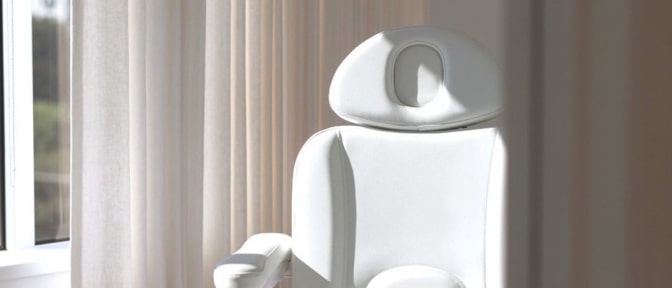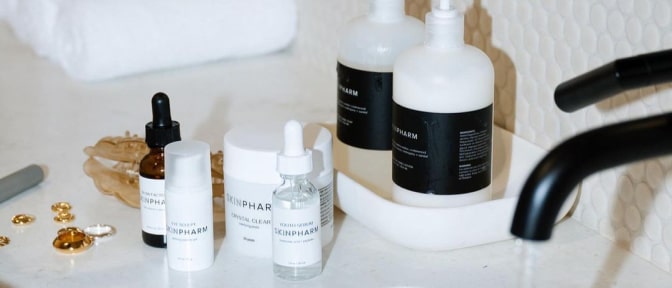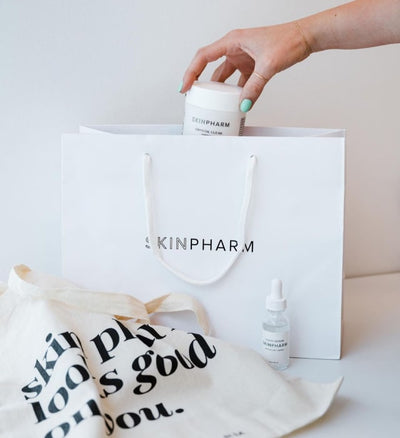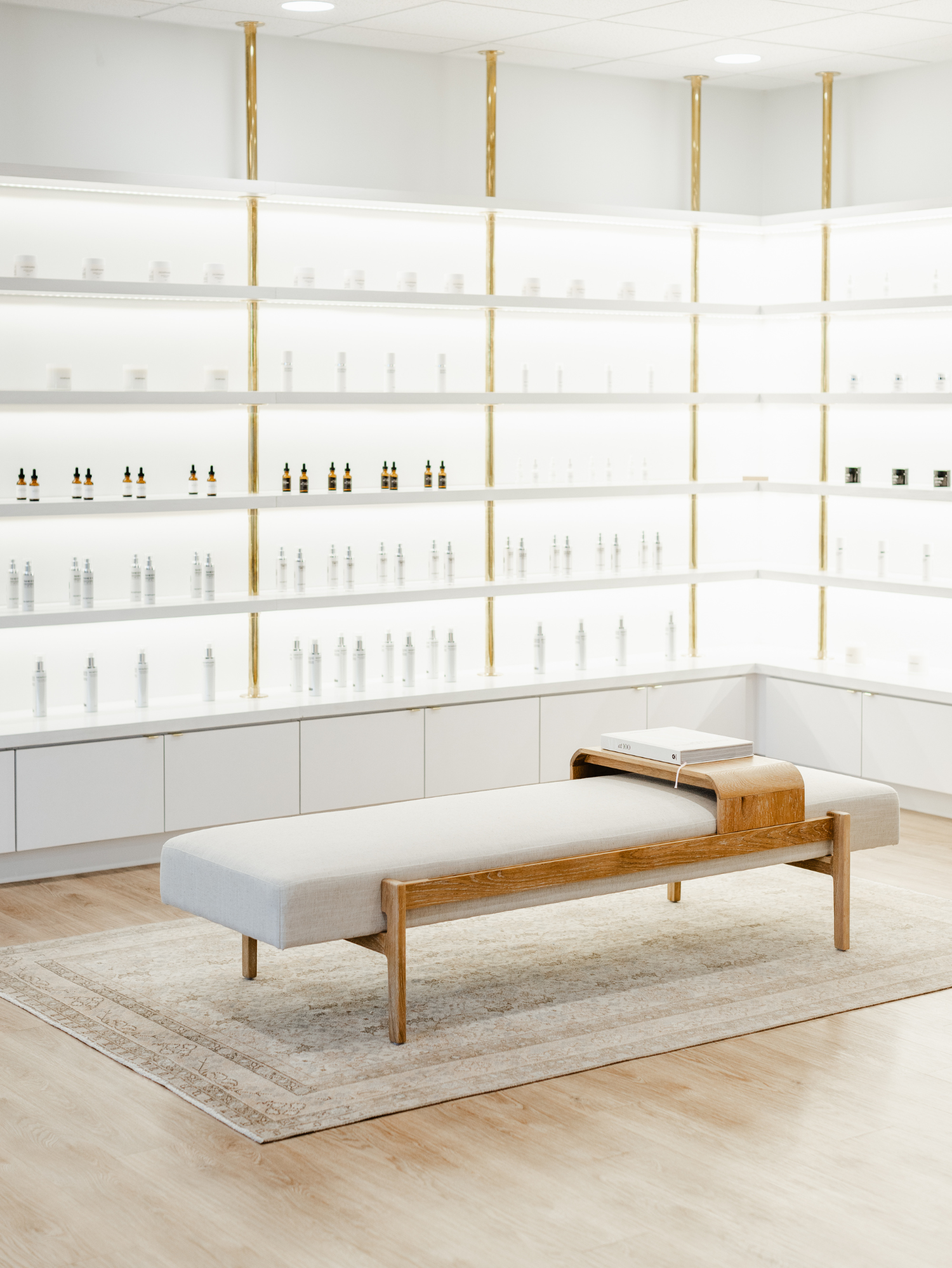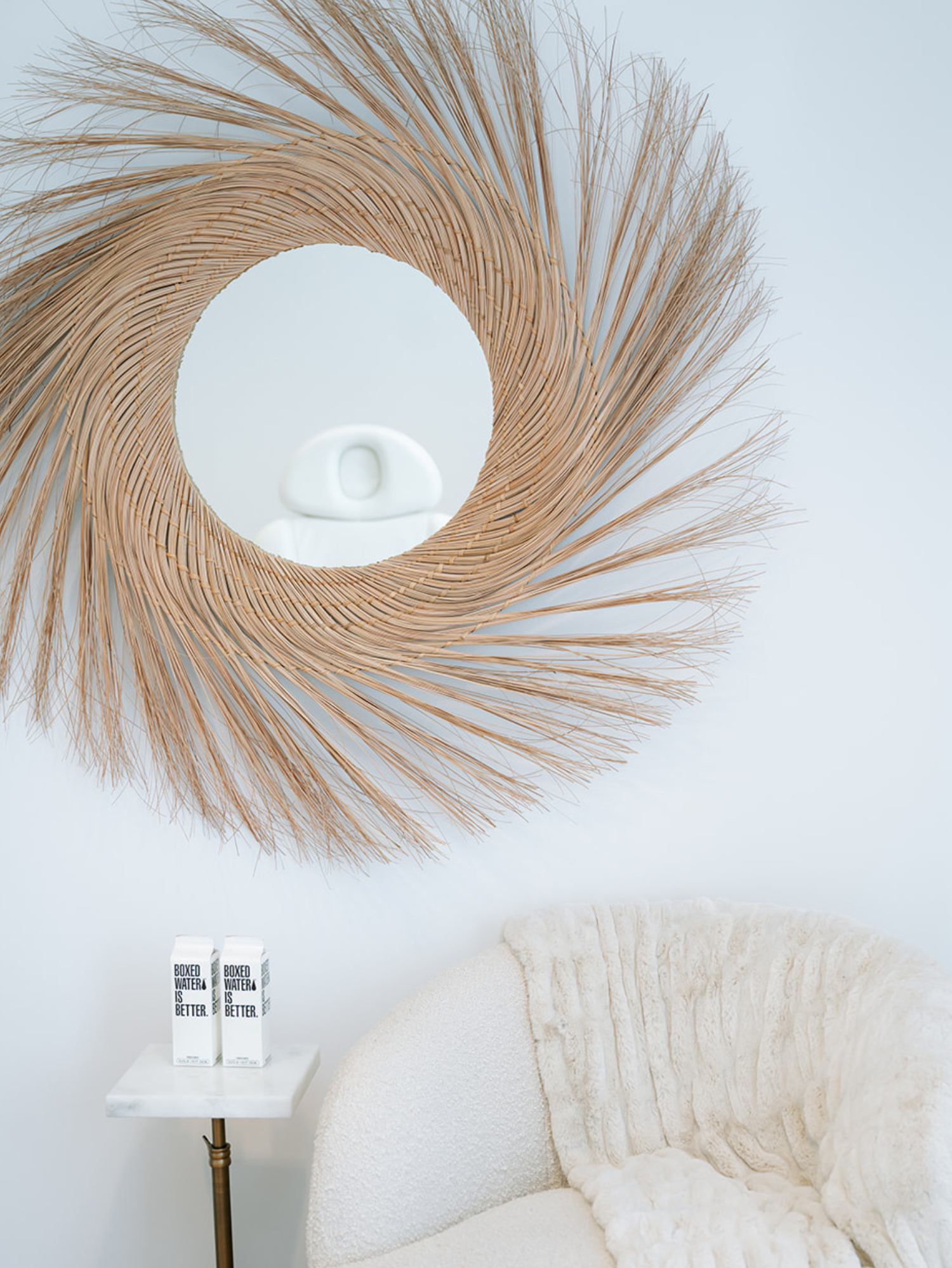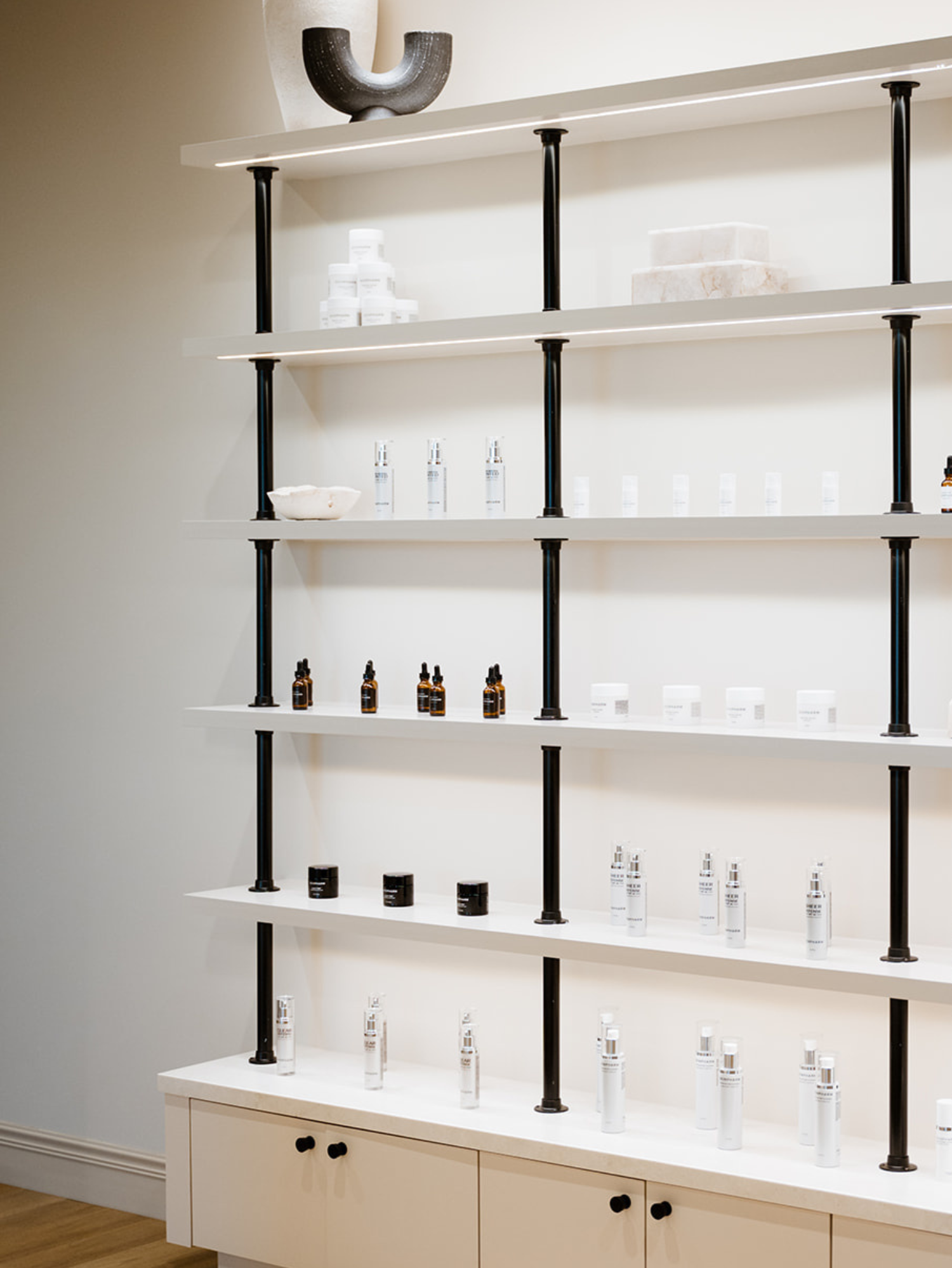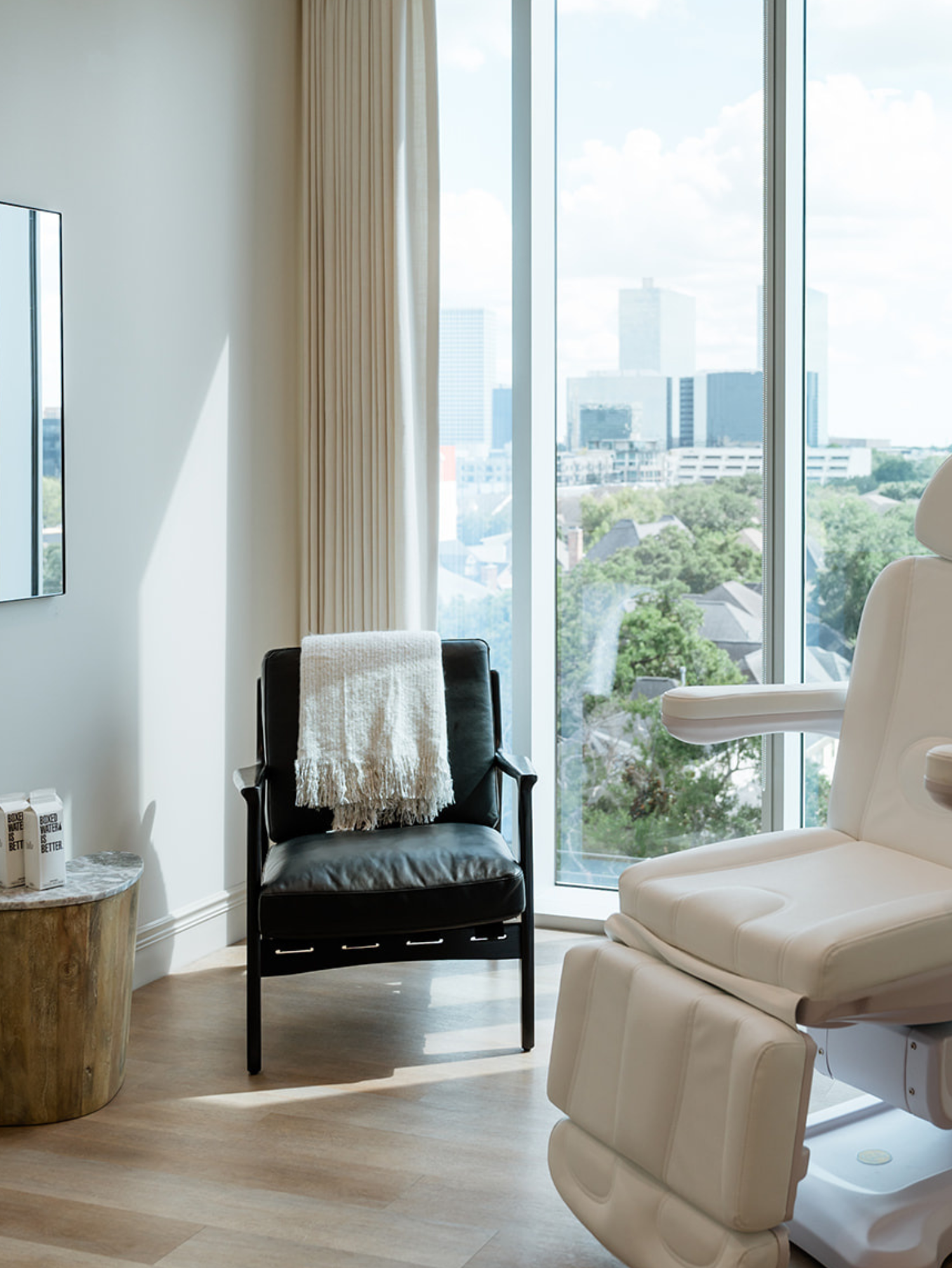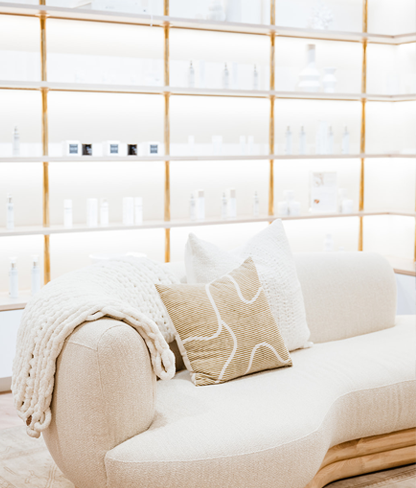Shop skin care
Clinics
VISIT OUR 9 CLINICS →
HOURS
Monday – Friday
9:30a – 5:30p
Not Sure How to Use Retinol? Here’s How!

There’s no question that retinol is one of the most effective and thoroughly researched skin care products on the market.
It’s also one of the most well-rounded, providing benefits for a wide range of skin concerns, such as texture . However, accessing those benefits for your skin requires a little bit of insider knowledge.
Skin Pharm is here to give you all the information you need to learn how retinol can work for you and how to use retinol safely and effectively.
Here’s a quick retinol refresher
Before we dive into how to use retinol, we wanted to provide a brief refresher on what it is and how it works.
Retinol is a derivative of vitamin A, just like retinoids and retinyl esters. They can provide several benefits for the skin, including helping to reduce the appearance of fine lines and wrinkles. Retinol has also shown a lot of promise in helping minimize hyperpigmentation (dark spots), acne scars, breakouts and blemishes.
There can be some confusion between retinol and retinoids, as well. It’s easy to remember the difference: prescription-strength retinol is available over the counter, while retinoids are usually only available by prescription. This is because over-the-counter retinol has a small percentage of the active formula.
While that does make it weaker than retinoids, it also reduces the likelihood of irritation. In the long run, you can get just as much benefit with over-the-counter retinol as you can with retinoids.
You just need to be consistent and use it over a longer period of time. The benefit of retinol over retinoids is that they are much less harsh on the face, especially around the forehead and cheeks. Just make sure to follow the proper directions to prevent the risk of skin peeling off.
So how do I use retinol?
Even though retinol is an incredibly effective ingredient, you’re less likely to get its trademark results if you don’t use it the right way. You’re also more likely to experience the side effects of retinol.
The first tip when starting retinol is to start with the lowest percentage effective for your skin. Starting with too high of a percentage too quickly – especially if you haven’t used retinol before – can create significant irritation and redness.
With that in mind, here’s a basic anti-aging skin care routine that you can use when you begin incorporating retinol products.
STEP 1: CLEANSE + TONE
Every skin care routine should start with the same step — washing your face.
Washing your face in the morning and the evening is essential, because it helps clear off the dirt, oil, debris and other environmental pollutants. When you’re building a routine with other skin care products, like retinol serum, toners and moisturizers, they won’t be nearly as effective without cleansing your face first.
You’re essentially forcing them to have to fight through an extra layer of moisturizer before they can enter into your pores, which just isn’t possible for a lot of products. Cleansing your face means giving the rest of your skin care products a clean, blank canvas. That way, they can more easily penetrate deep into your pores and be as effective as possible.
Next, swipe your face with a Crystal Clear clarifying pad, which acts as a toner.
STEP 2: APPLY YOUR SERUMS
Cue Youth Serum, our favorite for lightweight hydration! This’ll simultaneously create a protective layer and allow your retinol to absorb better, too.
STEP 3: APPLY AN EYE CREAM
Due to how retinol can impact and irritate the skin, it’s crucial to protect the delicate skin of your eye area as best you can. The skin in this area is thinner than the skin on the rest of your face (and body), so it is more susceptible to sensitivity.
Applying an eye product like Eye Sculpt acts as the skin’s barrier. It doesn’t always stop all of the retinol from getting through, but it minimizes the adverse side effects it can have.
STEP 4: WAIT UNTIL YOUR SKIN IS DRY
It’s essential to make sure to wait until your skin is dehydrated before moving on to applying your retinol. If you use it on wet or even damp skin, there is a greater likelihood that you’ll experience irritation.
That is because cleansing the skin opens up the pores. While you want your pores to be open so that they can accept more of the skin care products you’re using, having them be too open can be too overwhelming.
Hydration is an important way to support your skin, no matter what your skin care routine looks like.
However, if you aren’t using retinol, applying serums and moisturizers to damp skin can benefit you. That way, they have more access to add an extra layer of moisture and can increase the skin’s hydration even more.
STEP 5: APPLY YOUR RETINOL
Once your skin is dehydrated, it’s time to apply your retinol. We’ll use our Night Watch serum as an example, as we formulated it with 0.2% pure retinol (as well as bisabolol and vitamin C).
Start with a small amount (half a dropper full is great for serums, or a pea-sized amount for creams) of product. You’ll want to use clean, dry fingertips for application.
We recommend starting at your chin and working your way up to your face. Use your fingertips to apply the product to your skin using gentle, outward, upward strokes. Never rub the skin, as this can lead to increased irritation.
After you’ve applied your retinol, wait at least three to five minutes before moving on to the next step. That amount of time gives your retinol plenty of time to be thoroughly absorbed into the skin.
STEP 6: FINISH WITH A MOISTURIZER
Whether you’re using retinol or not, the final component of any skin care routine should always be a moisturizer. Retinol, in particular, can end up drying out your skin. (We like Face Whip or High Beam brightening lotion, in particular!)
As your body focuses on turning over dead skin cells, this takes water out of your skin to perform. That is why so many people experience dryness and tightness of the skin while actively using retinol.
Here’s how often you should use retinol
Now that you have a better idea of using retinol, how often should you be using it?
If you’re just starting, you may be tempted to go all out. Unfortunately, that is a significant part of why so many people experience irritation with retinol use. Slowly easing your skin into retinol can help it adjust and allow you to use it with more longevity.
How slowly you’ll want to start depends on your specific skin. For people with overly sensitive skin, just once or twice a week is plenty. If you don’t usually have issues with sensitivity or irritation, every other day will likely suffice.
Generally speaking, it takes the skin at least a few weeks to adjust. Don’t rush into using it more frequently than every other day, or you risk dealing with skin that is red, irritated and often uncomfortable.
If you notice any retinol side effects at any point, drop your frequency down or discontinue use for a while to allow your skin to heal.
Pro tip: you can buffer your retinol
If you have naturally sensitive skin or have had issues with retinol burn in the past, another technique may be a considerable advantage.
Known as buffering, this technique involves combining retinol with your moisturizer. While this does dilute the retinol, it also decreases the direct impact on your skin. People do this one of two ways – either by applying retinol after moisturizer or mixing them into one application.
Buffering is especially effective when you are first getting started, as it is a great way to ease the skin into retinol usage. Once your skin has adjusted, and you’re not noticing as much irritation, you can either stop buffering or increase the concentration of your retinol until you’ve reached your goal. Try to stick with a gentle moisturizer to stave off irritation even further.
You can also go back to this technique if you’re noticing an increase in skin irritation. That way, you don’t have to stop using your retinol entirely.
It is also important to not use heavy scrubs, toners, beta hydroxy acids (BHAs), alpha hydroxy acids (AHAs) and vitamin C as they may irritate the skin.
To wrap things up...
Hopefully, you now have a much better idea of how to use retinol effectively.
With the correct application and keeping an eye out for adverse effects, you can ease your skin into retinol usage. That means you can focus on the impressive results it can give you and not on how irritated your skin gets.
Skin Pharm has retinol products you can incorporate into your skin care routine so that you can truly live your best skin.
SOURCES:
